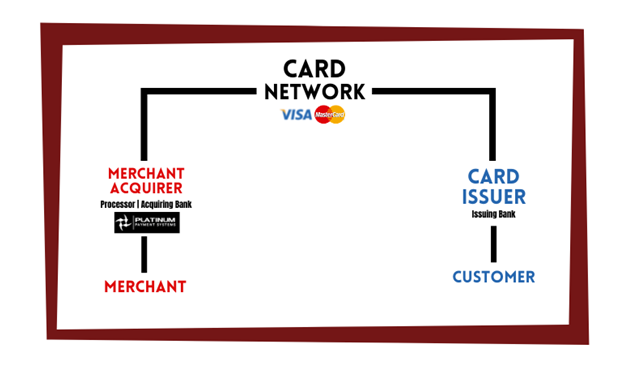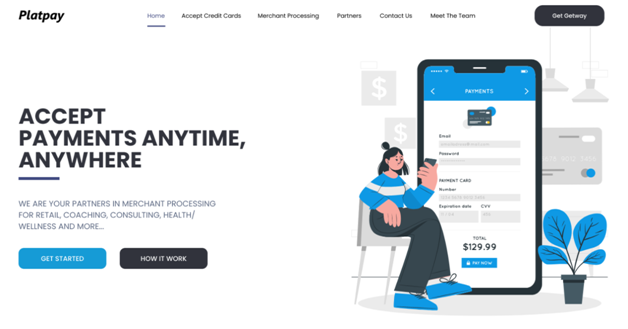The 2021 Payment Industry Ecosystem: Who’s Who? [PLATPAY]
![The 2021 Payment Industry Ecosystem: Who’s Who? [PLATPAY]](https://www.ustimesnow.com/wp-content/uploads/2021/07/Payment-Industry-Ecosystem-PlatPay-1.jpg)
The payment industry is seeing consistent disruption in the midst of the pandemic and it’s time to figure out exactly who’s who and where you fall in the pyramid that makes up its ecosystem.
This May, Jed Morley, the CEO of PLATPAY (Platinum Payment Systems), released a short educational video that opened up a discussion on the payment industry ecosystem.
In this video, he clears up a couple of misconceptions that merchants and organizations alike have when it comes to figuring out how they fall into the ‘payment cycle’ in conjunction with everyone else.
Today, we’ll be broadening Jed Morley’s discussion by demystifying the payment industry ecosystem as a whole and taking a peek at how it looks in 2021:
The Payment Industry Ecosystem | Key Players
The payment industry ecosystem has only grown over the years, and anyone stepping into it for the first time has the right to be incredibly confused about how it works. To start unraveling this messy soup of characters, we’ve created what we hope to be a simple illustration of how the key players relate to one another:

Now, to make this clear, the image above does not even begin to cover all the different people and organizations working in the background. But it should serve as a handy reference when trying to decipher the following glossary of ‘characters’:
- Customer: Also referred to as ‘cardholder’. These are the initiators of the payment being processed. They’re the ones exchanging funds for goods and/or services.
- Card Issuer: Issuing banks or financial organizations that provide the customer the card that they’re using to pay for the goods or services they’re acquiring from the merchant.
- Merchant: The retailer, the seller, the service provider, etc. This category makes up both the individuals and organizations that exchange goods and/or services for payment with the customers.
- Merchant Acquirer: Entities that allow merchants to collect payments and are liable for helping the merchant with risk management. They offer a wide range of services for merchants: banking, gateways, hardware, front-end processing, back-end processing, etc. However, because of the growth in the industry, a lot of those services are now resold by Payment Service Providers (who are able to underwrite merchants more freely and more thoroughly.)
- Payment Service Providers (PSPs): May also be called Merchant Service Providers (MSPs) or Independent Sales Organizations (ISOs). This group of service providers are non-banking financial organizations that work with acquiring banks and are certified with card networks — they ‘resell’ bank services and act as an intermediary between the merchant and acquiring banks. Jed Morley’s ISO/MSP company, PLATPAY, as an example, falls into this category.
- Payment Facilitators: Much like how acquiring banks had struggled to keep up with the influx of merchants requiring card processing had resulted in the popularity of PSPs, the more recent insurgence of merchants requiring online payment processing resulted in the founding of Payment Facilitators (PayFacs). These, as described in Jed Morley’s video, are categorized as ‘merchants’ under the acquiring banks and accept and collect payments for other merchants (who are referred to as ‘submerchants in this case).
- Payment Aggregators: These are financial organizations that are insured through the Federal Deposit Insurance Corporation (FDIC) to hold and settle funds (e.g., Airbnb holds funds for people who want to rent out their properties—the merchants in this case—until their customer has finished their stay, at which point, the aggregator will release them.)
- Gateways: These entities provide the infrastructure required to link merchants and customers to their payment networks (e.g., PayPal, Stripe, Adyen, WePay, etc.)
- Card Networks: Are the ones that provide the infrastructure that connects all the main players in the payment ecosystem.
In the next section, we finish things off by making sense of how some of these ‘characters’ come together in the real world.
The Payment Processing Cycle | PLATPAY
As can be expected, with so many players on the board, the payment processing cycle is a complex beast. There are several steps, several ‘middle-men’ that work together behind the scenes so that, if a customer were to, for example, swipe their card through a terminal, their payment is authorized and settled in a manner that is both secure and convenient for the merchant. Like as is shown in the example step-by-step breakdown below:
- Issuing Bank → Customer: The issuing bank issues a card to the customer.
- Customer → Merchant’s Terminal: The customer purchases goods by swiping their card through the merchant’s POS terminal or device (provided by the processor) that captures the relevant information and transmits it to the merchant’s payment processor.
- Processor → Acquiring Bank → Card Network: The processor then passes that information to the merchant’s acquirer and then the acquirer then proceeds to forward it to the customer’s credit card network for authorization.
- Card Issuer → Card Network: For the next sequence, the card network and the card issuer go back and forth in order to authorize the payment. Once approved, an authorization code will be sent.
- Card Network → Merchant Acquirer → Merchant’s Terminal: The processor receives the authorization code from the card network, which sends it back to the merchant acquiring bank so that the merchant can (from the same terminal) print a receipt for the customer.
After this, the process goes through another cycle for the payments to be settled properly, which usually occurs at the end of the day so that the merchant can receive all the funds that had been placed on hold on their customers’ accounts. But that’s a lengthier process involving a variety of fees that differs too much based on certain factors, so we’ll leave it here.

If you are curious about the settlement process, however, you can reach out to a processor like PLATPAY (who offers free evaluations). Getting in touch with their customer support should clear up how your business, specifically, can begin accepting payments in 2021.